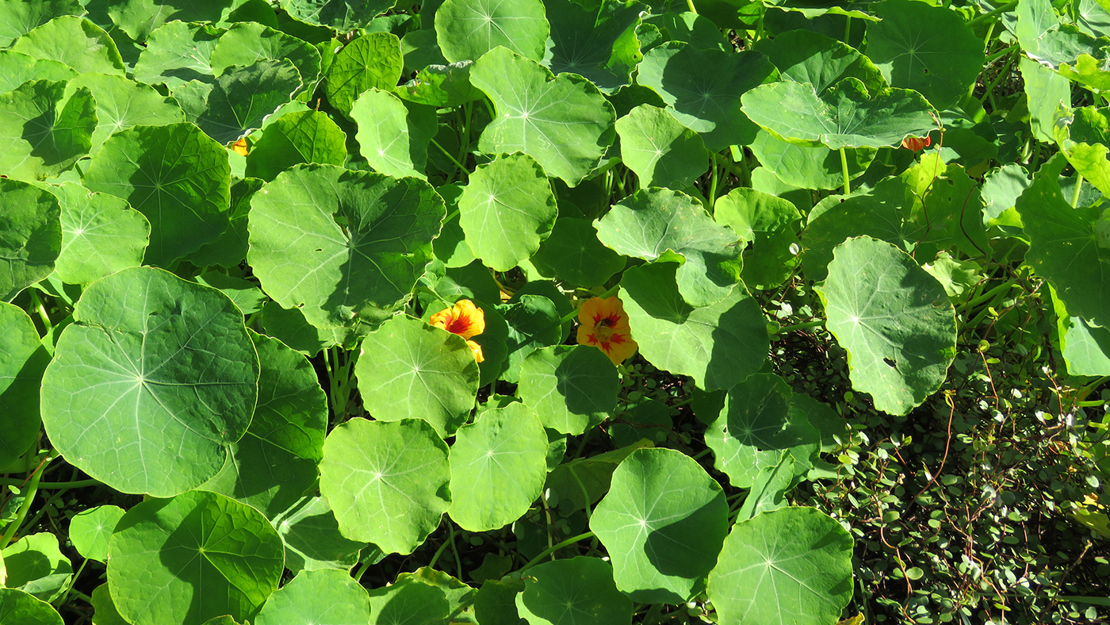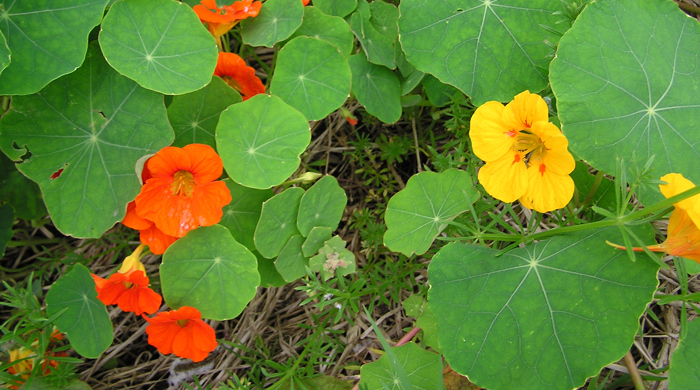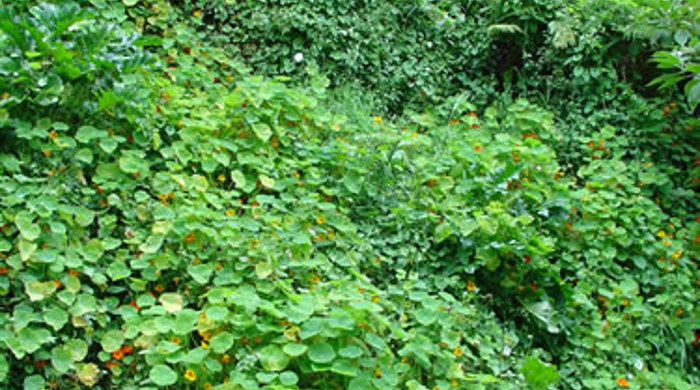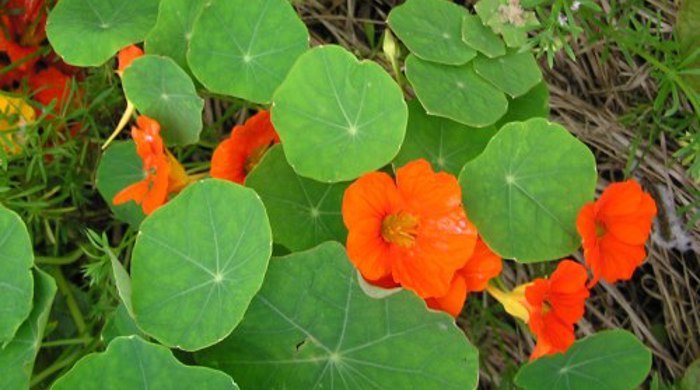Tropaeolum majus
Nasturtium
Family: Tropaeolaceae
Origin: South America

Regional Pest Management Plan (RPMP) status
- Not a legally declared pest
General description
Short-lived, hairless, scrambling herb. Stems are fleshy, < 10 m long and creeping or sprawling. Leaves are round, paler underneath and borne on a stalk attached to their undersides. Flowers have a basal spur and are tubular, orange/red/yellow and borne in October – May. Fruit is fleshy, green, segmented and contains ribbed green seeds.
What you need to know
Although nasturtium is not a legally declared pest plant, it may still be invasive in some situations. Consider lower risk alternatives for your garden, such as native plants.
Habitats
Riparian margins, shrubland, wetlands, disturbed sites, urban areas, wasteland, roadsides.
Dispersal
Seeds dispersed by water and possibly birds. Vegetative spread from stem fragments. Human-mediated dispersal through dumping of garden waste.
Impact on environment
Can form dense infestations and smother vegetation.
Control
Site management
Follow up treated areas 3 times per year. Encourage natural regeneration of native plants or replant treated areas where possible after 2-3 treatments to establish dense ground cover and minimise reinvasion.
Recommended approaches
Physical control
Method: Pull out.
Plant parts requiring disposal: Seeds.
Disposal options: Remove to greenwaste or landfill if practical.
Biocontrol
Biocontrol is currently not available for this species.
Community agrichemical control recommendations
No qualifications: Foliar spray with 100ml glyphosate green per 10L of water.
Certified Handler/Experienced agrichemical user: Foliar spray with 100ml glyphosate green per 10L of water and 20ml penetrant.
Caution: When using any herbicide or pesticide please read the label thoroughly to ensure that all instructions and safety requirements are followed.






